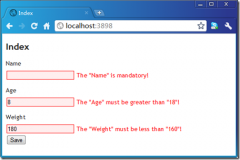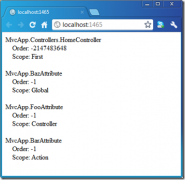MVC教程阅读排行
-
2014-04-08
-
2014-03-11
-
2014-04-08
-
ASP.NET MVC5 网站开发实践(二) Member区域–管理列表、回复及删
2014-04-08
-
2014-03-11
-
2014-03-11
-
认识ASP.NET MVC的5种AuthorizationFilter
2014-03-11
最新文章
-
mvc4中jquery-ui日期控件datepicker的应用
2014-05-28
-
How ASP.NET MVC 4Works?[持续更新中…]
2014-05-20
-
2014-05-20
-
ASP.NET MVC5 网站开发实践(二) Member区域–管理列表、回复及删
2014-04-08
-
2014-04-08
-
2014-04-08
-
认识ASP.NET MVC的5种AuthorizationFilter
2014-03-11
-
2014-03-11

![MVC、MVP以及Model2[上篇]](http://p1.codesocang.com/uploads/allimg/c140311/139450911Z30P-143T_lit.png)







